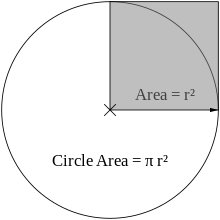what is the contribution of any 5 Indian mathemation in the chapter 'circle'?
The circle has been known since before the beginning of recorded history. Natural circles would have been observed, such as the Moon, Sun, and a short plant stalk blowing in the wind on sand, which forms a circle shape in the sand. The circle is the basis for the wheel, which, with related inventions such as gears, makes much of modern machinery possible. In mathematics, the study of the circle has helped inspire the development of geometry, astronomy and calculus.
Early science, particularly geometry and astrology and astronomy, was connected to the divine for most medieval scholars, and many believed that there was something intrinsically "divine" or "perfect" that could be found in circles.[3][4]
Some highlights in the history of the circle are:
- 1700 BCE – The Rhind papyrus gives a method to find the area of a circular field. The result corresponds to 256/81 (3.16049...) as an approximate value of π.[5]

Tughrul Tower from inside
- 300 BCE – Book 3 of Euclid's Elements deals with the properties of circles.
- In Plato's Seventh Letter there is a detailed definition and explanation of the circle. Plato explains the perfect circle, and how it is different from any drawing, words, definition or explanation.
- 1880 CE – Lindemann proves that π is transcendental, effectively settling the millennia-old problem of squaring the circle.[6]
Analytic results
Length of circumference
Further information: CircumferenceThe ratio of a circle's circumference to its diameter is π (pi), an irrational constant approximately equal to 3.141592654. Thus the length of the circumference C is related to the radius r and diameter d by:
- {\displaystyle C=2\pi r=\pi d.\,}
Area enclosed

Area enclosed by a circle = π × area of the shaded square
Main article: Area of a circle
As proved by Archimedes, in his Measurement of a Circle, the area enclosed by a circle is equal to that of a triangle whose base has the length of the circle's circumference and whose height equals the circle's radius,[7] which comes to π multiplied by the radius squared:
- {\displaystyle \mathrm {Area} =\pi r^{2}.\,}
- 2





